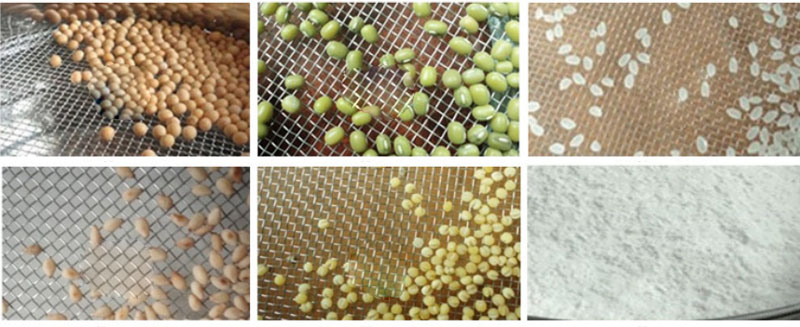Friday February-24 2023 09:44:33
The Standard Test Sieve used in the laboratory for inspection can be divided into three types from the screen material, each of which has different characteristics and application ranges: wire woven mesh (widely used, with only square holes between 2.36 mm and 0.02 mm) net), punching plate screen (mainly used in large mesh, there are two kinds of round hole and square hole from 0.2 to several hundred millimeters), electroforming screen (mainly used in high-precision occasions, can do Each mesh is within mean error). As a professional manufacturer of Standard Test Sieve, it is necessary to have a tool microscope and a projector. The tool microscope is used to check the accuracy of the mesh, and the arithmetic mean method is used (now the new method is the normal distribution value).

Standard Test Sieve wire woven mesh has low cost and good flexibility, but relatively low precision (large mesh holes are allowed), and the mesh may be deformed, (the mesh precision can be controlled by expanding and shrinking holes, and electrochemical methods can be used) Hole fixing) Generally, manufacturers with high-precision screen production capacity are required to ensure mass production (screens that meet the GB/T6003.1-1997 standard need to be selected from a large number of high-precision screens). Most of the application industries are the diamond industry, especially the export manufacturers, which require a standard negative difference, because foreign countries are half a size away from China, and at the same time, the basic grains account for more than 90%, such as 230, preferably between 75 microns and 63 microns. the
The perforated plate screen type inspection sieve has uniform mesh precision and is not easily deformed. It is mainly used for the detection of large particles. Because it has two types of round holes and square holes, it is used for asphalt collection sieve with round holes and coal sample sieve with round holes.
Electroforming screens are manufactured by electrochemical methods, with high precision. Theoretically, the precision can reach one micron. However, due to the different process molds of manufacturers, there will be great differences. At the same time, the flexibility is not good, easy to crack, and the cost is too high, so it is not applicable. for production. There are sieves for inspection in various industries in the country, such as pharmacopoeia sieves, sand and gravel sieves, cement sieves, etc., all of which are meshed according to industry requirements and mesh tolerances comply with GB/T6003.1-1997, GB/T6003.2- 1997, GB/T6003.3-1997.
Standard Test Sieve sieves have a variety of user needs, but the mesh accuracy, screen frame matching accuracy, and material are the basic requirements.
Standard Test Sieve is widely used in scientific research and production, laboratories, quality inspection rooms, and laboratories of colleges and universities in metallurgy, powder, chemical, pharmaceutical, building materials, geology, national defense and other departments.

Standard Test Sieve Production Requirements and Mesh Size
The structure of the standard screen, the screen frame should be flat and smooth, and it should be convenient to nest with other screens, covers, receiving trays, etc. of the same b...
What is the standard operating procedure of Standard Test Sieve?
Standard Test Sieve is mainly used to filter and detect the particle size structure of granular and powdery materials, the content of liquid solids and the amount of debris. It is m...
Standard sand sieve for cement testing
Cement Standard sand sieve is mainly used in various laboratories, laboratories, item screening, sieving, grading and other inspection departments to accurately determine the partic...
Standard Test Sieve is a sieve with openings of uniform size and shape, which can separate certain particles from the material through a metal cloth with holes. The standard test si...
Conversion table between classification of standard test sieve and mesh aperture
standard test sieve is mainly used in various laboratories, laboratories, research institutes, inspection rooms, etc., for random inspection, inspection and testing of small samples...
Feb 24, 2023
Application and Features of Standard Test Sieve
The Standard Test Sieve used in the laboratory for inspection can be divided into three types from th...
Feb 24, 2023
Standard Test Sieve Production Requirements and Mesh Size
The structure of the standard screen, the screen frame should be flat and smooth, and it should be co...
Feb 24, 2023
What is the standard operating procedure of Standard Test Sieve?
Standard Test Sieve is mainly used to filter and detect the particle size structure of granular and p...
Feb 23, 2023
How to choose Test Sieve Shaker
The selection of materials depends on the characteristics. The users demand for the product will larg...
![]()
Then we look forward to hearing from you
Contact Us
Industrials
Yanjin county forest park gate to the west 1000 meters north road sitemap
